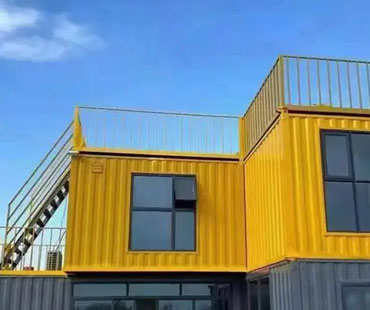Maritime shipping containers are the unsung heroes of the modern global economy. They form the backbone of international logistics, enabling the efficient, safe, and standardized transportation of goods across continents and oceans. Without these steel giants, the interconnected world of commerce, supply chains, and global consumer markets as we know it today would not exist.
1. The Evolution of the Shipping Container
Before the invention of standardized containers, global trade was a slow and costly process. Goods were packed, unloaded, and repacked manually at every port, a system known as “break-bulk shipping.” This method was not only time-consuming but also prone to theft and damage.
In the 1950s, American entrepreneur Malcom McLean revolutionized the shipping industry by developing the concept of the standardized intermodal container — a single metal box that could be transferred seamlessly between ships, trucks, and trains. This innovation reduced loading times from days to hours and cut transportation costs dramatically.
Today, millions of containers crisscross the oceans, making it possible to ship anything from raw materials and electronics to vehicles and clothing efficiently and affordably.
2. Standardization and Global Logistics Efficiency
The greatest strength of maritime shipping containers lies in their standardization. The most common types are 20-foot and 40-foot containers, built to International Organization for Standardization (ISO) specifications. This uniformity ensures that containers can be stacked, stored, and handled anywhere in the world with the same cranes, ships, and trucks.
Thanks to this standardization, global trade has become remarkably efficient. A container loaded in Shenzhen can travel by sea to Rotterdam, be transferred onto a train bound for Germany, and then onto a truck headed for a local retailer — all without unpacking the contents. This “intermodal” system revolutionized supply chains, making international shipping faster, safer, and more predictable.
3. The Different Types of Maritime Containers
While standard dry containers dominate global trade, the maritime shipping industry uses a variety of specialized containers to meet different cargo requirements:
Dry Containers: Used for general cargo such as textiles, electronics, and machinery.
Refrigerated Containers (Reefers): Maintain precise temperature control for perishable goods like fruits, meat, and pharmaceuticals.
Open-Top Containers: Designed for oversized cargo that cannot fit through standard doors, such as industrial equipment or construction materials.
Flat-Rack Containers: Used for heavy or bulky goods, including vehicles and large machinery.
Tank Containers: Specifically built for transporting liquids, chemicals, and gases safely.
This diversity allows maritime shipping to handle virtually every type of cargo, ensuring flexibility across industries.

4. The Role of Containers in Global Trade
Maritime containers are not just tools of logistics — they are the foundation of globalization. Approximately 90% of the world’s traded goods travel by sea, and the majority of those goods are transported in containers.
These steel boxes enable countries to specialize in production, create global supply chains, and access markets thousands of miles away. For example, electronics assembled in East Asia reach consumers in Europe and North America, while agricultural products from South America feed markets in Asia and Africa.
Containerization has made international trade more accessible and affordable, promoting economic growth and cultural exchange worldwide.
5. Technology and the Future of Container Shipping
The shipping container industry continues to evolve with advances in digitalization and smart technology. Modern containers can be equipped with GPS trackers, temperature sensors, and IoT (Internet of Things) devices, allowing logistics companies to monitor cargo conditions in real time.
Additionally, innovations in sustainable shipping — such as low-emission vessels, recyclable container materials, and AI-driven route optimization — are helping reduce the environmental impact of maritime transport. The future of container shipping will blend efficiency with sustainability, balancing global trade demands with ecological responsibility.
6. Beyond Transport: Containers as Symbols of Innovation
Interestingly, containers have found new life beyond shipping. Around the world, repurposed containers are being transformed into pop-up stores, modular offices, student housing, and even eco-friendly homes. Their durability, portability, and affordability make them a popular choice for sustainable architecture and creative design.
This trend highlights how a simple concept — a metal box designed for trade — has transcended its industrial origins to become a versatile symbol of modern innovation.
Maritime shipping containers are much more than steel boxes; they are the engines of global commerce. They connect producers and consumers across continents, support economies, and sustain the modern way of life.
From their invention in the mid-20th century to their central role in today’s complex global supply chains, containers have transformed how the world trades, builds, and communicates. As technology advances and sustainability becomes a priority, the humble shipping container will continue to evolve — remaining, as ever, the core carrier that facilitates global trade.


